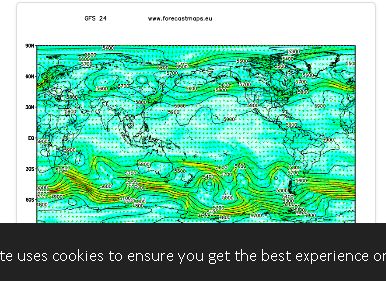Just how do Global Weather Programmes predict the long run? Weather forecasts certainly are a big a part of us and, whether we’re taking a look at a worldwide weather map, a weather map of Europe, or we merely are interested in an area weather map for one more day or two, what you’re seeing is based on data removed from huge mathematical models referred to as numerical weather prediction (NWP) models. The first NWP models were pioneered through the English mathematician Lewis Fry Richardson, who produced, by hand, six hour weather forecasts for predicting that condition of the atmosphere over just two points in Europe. Even this very basic way of NWP was complex also it took him about six weeks to generate each, very sketchy and unreliable, Europe weather map. It wasn’t until the coming of the pc how the huge computations required to forecast the next thunderstorm can also be completed from the period of time in the forecast itself.

The 1st practical models for weather prediction didn’t enter into being before the 1950s, and yes it wasn’t before the 1970s that computers begun to become powerful enough to even commence to correlate the enormous quantities of data variables which might be found in an accurate forecast map. Today, to generate the world weather maps for example those created by The world Forecast System (GFS), that is a global weather prediction system managed through the United states of america National Weather Service (NWS), a number of the largest supercomputers on earth are employed to process the massive mathematical calculations. Every major country presenting its weather agency who makes the next thunderstorm maps for Europe, weather, maps for Africa and weather maps for the complete world. A couple of the other sources employed for weather prediction that you will often see are weather maps CMC, which are those created by the Canadian Meteorological Centre and weather maps NAVGEM, that are manufactured by US Navy Global Environmental Model. So, how must they actually predict the world weather? You may expect, predicting the weather just isn’t an easy task. A
gfs africa is predicated upon historical data on which certain climatic conditions generated in the past and on known cyclical variations in weather patterns. Data about the current climate conditions is then collected from all worldwide, which may be millions of readings from weather stations, balloons and satellites, and they are fed in the mathematical model to calculate just what the likely future weather conditions will be. To provide you with and concept of how complex the production of weather maps is, the slightest alternation in conditions in a single country may have a direct effect for the weather elsewhere, which is called the butterfly effect. This can be the theory that suggested how the flapping with the wings of your butterfly could influence the road a hurricane would take. Then, you also have the issue of interpretation. Some meteorologists might interpret certain conditions differently from other meteorologists and that is one reason why various weather agencies worldwide collaborate on his or her weather forecasts to make ensemble forecasts, which, essentially, use a few different forecasts to predict essentially the most likely outcome. Whilst weather forecast maps are getting to be much more reliable over time, especially the temporary forecasts, the unpredictability of weather systems and the multitude of variables involved, implies that, the longer-term the forecast is, the less accurate it is. Quite simply, the next time you receive caught out while it is raining; don’t blame the next thunderstorm map, think about that butterfly instead.
For additional information about weather forecast maps explore this useful web portal:
web link

